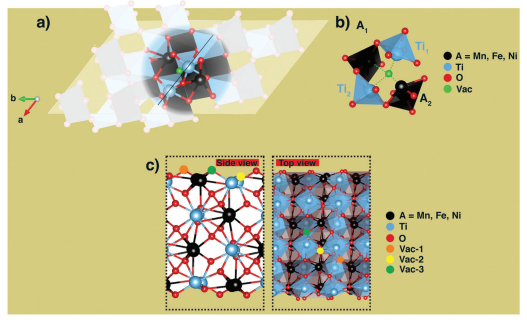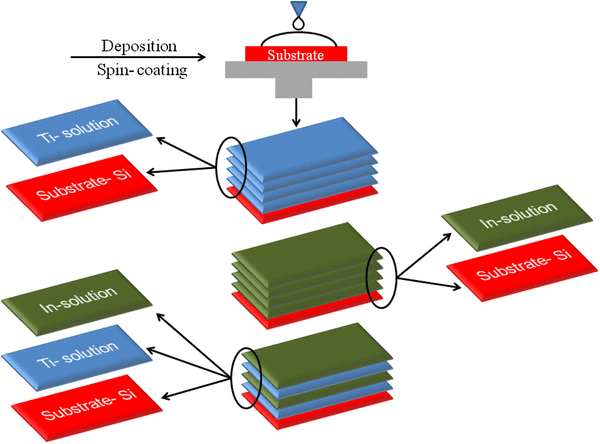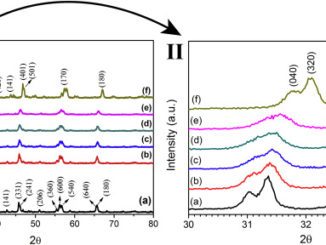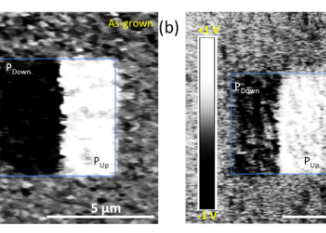
A DFT investigation of the role of oxygen vacancies on the structural, electronic and magnetic properties of ATiO(3) (A = Mn, Fe, Ni) multiferroic materials
Abstract: In order to achieve deep insight into the multiferroic behavior and electronic properties of intrinsic oxygen vacancies in ATiO(3) (A = Mn, Fe, Ni), first- principles calculations based on hybrid density functional theory were carried out for bulk and non- polar (110) surface models. We found that the formation of an oxygen vacancy is accompanied by structural and electronic disorders in the constituent clusters of [TiO6] and [AO(6)] in ATiO(3), that become [TiO5] and [AO(5)], respectively. This perturbation contributes to the generation of intermediary energy levels in the band gap region, thus narrowing the required excitation energy. In addition, the remaining electrons are mainly trapped in the empty 3d orbitals of the Ti cations neighboring the oxygen vacancy, generating [TiO5]’ (3d(1)) that mediates an antiferromagnetic to ferromagnetic transition in MnTiO3 and FeTiO3 materials. In particular, MnTiO3 surfaces show exposed [TiO4]’ species that are responsible for its half- metallic behavior. The present work provides compelling evidence that controlling oxygen vacancies can be a valuable strategy to tailor the multiferroic properties of ATiO(3) materials.
Author(s): Ribeiro, RAP; Longo, E; Andres, J; de Lazaro, SR
PHYSICAL CHEMISTRY CHEMICAL PHYSICS
Volume: 20 Pages: 28382-28392 Published: DEC 7 2018
DOI: 10.1039/c8cp04443k




